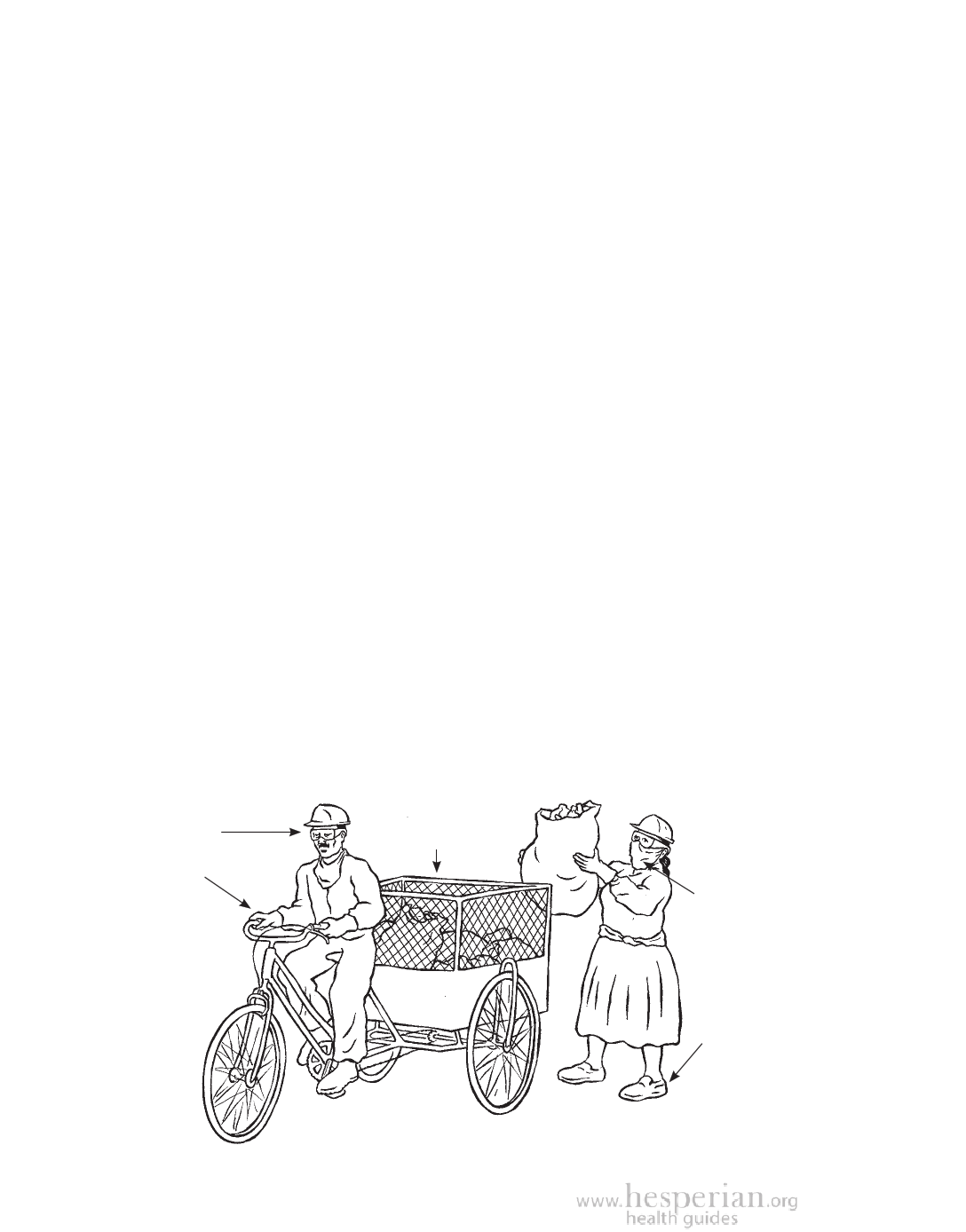
406 Solid Waste: Turning a Health Risk Into a Resource
Waste collection, transport, and storage
If your community does not have a reliable waste collection service, you can
organize one with the help of local government and businesses. As you make
plans, keep in mind what will be collected and whether it will be taken for
resale to larger recycling businesses or to a community recycling program.
The less distance your waste travels the better. But many communities are
not able to recycle waste locally, so other solutions must be found.
Ways to prepare waste
The way waste is prepared for collection, transport, and storage depends on
how much space you have, who will do the work, who will buy the discards,
and what they will be used for. To prevent bad smells and spreading germs,
materials should be cleaned, dried, and flattened or stacked to take up as little
space as possible and to reduce the possibility of accidents.
Computers, radios, and televisions contain many sellable and recyclable
parts, but much of what they contain is toxic. These materials are best taken
apart after receiving training for each product, and using protective safety
gear (see Appendix A) and good ventilation. All toxic materials’ containers
need special handling (see pages 410 to 411).
Health and safety for waste collectors
Waste collectors are at risk for all the health problems that come with waste.
To prevent harm, waste collectors need training in how to prevent health
problems and where to go for treatment if problems do arise.
If waste collectors organize into cooperatives or small businesses, it may
be easier to pool resources, provide training, and gain government or other
community support to purchase safety equipment and make the work as safe
as possible.
Eyewear
Gloves
Waste cart
Face masks
Closed shoes
A Community Guide to Environmental Health 2012